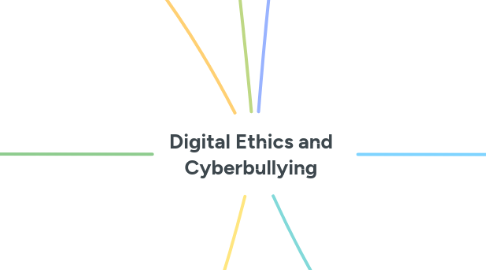
1. What is Cyberbullying?
1.1. Aggressive and deliberate actions or behaviours
1.1.1. sending or posting harmful or unkind material
1.1.2. abusive messages
1.1.3. imitating or excluding others online
1.1.4. threats or coercion
1.2. Carried out by groups or individuals using digital technology
1.2.1. text messages
1.2.2. social media
1.2.3. emails
1.2.4. phone calls
1.3. Causes emotional harm or distress
1.3.1. academic perfomance and school attendance
1.3.2. social exclusion/withdrawal
1.3.3. embarrassment, anger, fear
1.3.4. stress, anxiety, depression, self-esteem
1.3.5. substance use
1.3.6. suicidal thoughts or actions
2. Students' online ethics
2.1. Unethical actions online include pirating, plagiarising, cyberbullying
2.2. Need to teach students to understand consequences of online actions
2.3. Appropriate use of media an respect for the privacy and property of themselves and others
3. Cyberbullying conceptual framework (Redmond et al., 2017)
3.1. Identify
3.1.1. Student awareness - roles, reporting, seeking help
3.1.2. Teacher role - recognise signs, understand impact, safe and supportive classroom culture and climate
3.2. Manage
3.2.1. Role and responsibilities of school - policies, responses, reporting culture, communication, community resources and supports
3.2.2. Role and responsibilities of teacher - knowledge and adherance to policies, reporting, strategies for support and management
3.3. Prevent
3.3.1. Collaborative effort between schools, parents and community
3.3.2. Professional training
3.3.3. Actively teach anti-bullying programs
